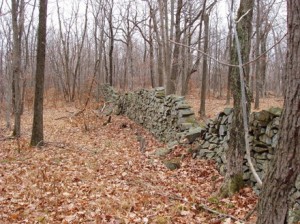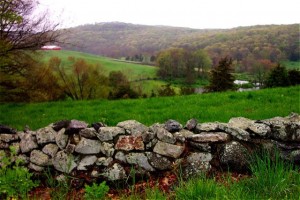
The stone object shown in this photograph is a wall (rather than a line or concentration or notable stone) because it meets five criteria. It’s a discrete cultural object: (1) made of stone, natural or artificial), is (2) granular, meaning made of fragments or individual stones rather than a single slab of rock, is (3) much longer than wide, is (4) continuous along its length, and (5) meets one or both height requirements. Taxonomically it is a FITTED variant of the PANEL subtype, of the SINGLE type, of the FREESTANDING family, of the class WALL, of the STONE domain.
ARE YOU READY FOR THIS?
If you’re only interested in mapping the footprint of stone walls on a property, all you need is a definition. If you want to differentiate them, then you will need a classification. And if you want to do this scientifically, you will need a taxonomy. This page presents a simple version of the peer-reviewed “Taxonomy and Nomenclature of the Stone Domain in New England.” And earlier version, now superceded, was published in my book Exploring Stone Walls (2005), which was reviewed through published reviews and comments. Refer either to that book or to the page stone wall science for a description of the terms and criteria used.
If you’re not up to this level of precision, then I suggest the much simpler typology presented elsewhere on this website.
WHAT IS A TAXONOMY?
A taxonomy is a rigorous classification system based on objective criteria that are well defined. The word taxon is singular. The word taxa is plural. Taxonomies are hierarchical, with less inclusive taxa nested into more inclusive taxa, for example Linnaean species nested into genera. True taxonomies are dichotomous: based on binary decision trees that force the user into progressively more specific categories based on yes or no answers to very specific questions.

NOTES AND CAVEATS:
- This taxonomy, like all taxonomies, is a work in progress.
- All taxonomies are compromises between the single category that includes all, and the maximum number of categories in which there is only one unique object.
- Taxonomies are cumbersome, because they require decision-trees based on explicit observations.
- If you have suggestions for how to improve this in future editions, please contact us.
GETTING READY
Before using the taxonomy, it will help to review the general descriptions of the taxa and look over the entire hierarchical list of taxa.
THE TAXONOMY ITSELF
Begin with the most inclusive taxon, the Stone Domain
